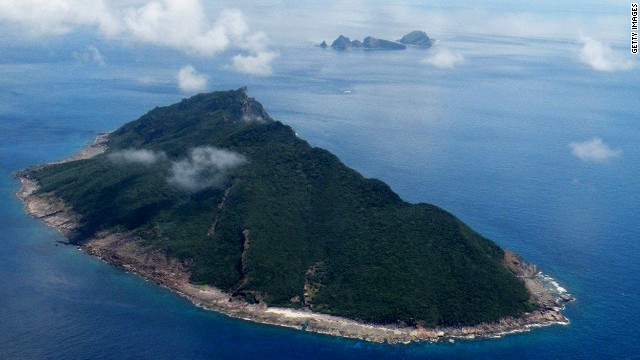Senakaku / Diaoyu dispute: Japan votes to change island status, also claimed by China

Ishigaki City Council in Japan’s Okinawa prefecture has approved legislation changing the administrative status of an uninhabited island group, 1,200 miles (1,931 kilometers) southwest of Tokyo.
The islands, known as Senkakus in Japan and Diaoyus in China, were ruled by Japan in 1972, but both Tokyo and Beijing say their claims to the group date back hundreds of years.
China warned before Monday’s vote against any change in the status quo over the islands.
“Diaoyu Island and the associated islands belong to China,” the Chinese Foreign Ministry said on Friday. “We ask Japan to adhere to the spirit of consensus of the four principles, avoid creating new incidents regarding the Diaoyu Island issue and take practical actions to maintain the stability of the situation in the East China Sea.”
One of these four principles was for Japan to recognize that sovereignty over the islands was questionable.
But a bill passed in Ishigaki on Monday removed any concerns about how such a move could be understood in Beijing.
“The approval of this case did not take into account the influence of other countries, but was considered to improve the efficiency of administrative procedures,” the council said.
Earlier, the Japanese newspaper Asahi Shimbun reported on the bill “claiming that the islands are part of Japanese territory.”
It is a language that is classified in Beijing.
“Changing administrative appointments at this point can only complicate the dispute and bring more risks of crisis,” Li Haidong, a professor at the Institute of International Relations at the University of China, told the Global Times.
Fears of a possible conflict were heightened last week with the Japanese Coast Guard announcing that Chinese government ships had been spotted in waters near Senakaku / Diaoyu Island since mid-April, setting a new record for consecutive days.
By Monday, those sightings had arrived 70 days in a row, and the Japanese Coast Guard said four Chinese ships were in the area while voting took place in Okinawa.
In response to the increased Chinese presence, Yoshihide Suga, the chief secretary of the Japanese cabinet, confirmed Tokyo’s decision at a news conference last Wednesday.
“The Senkaku Islands are under our control and are unquestionably our territory historically and under international law. It is extremely serious for these activities to continue. We will respond to the Chinese side firmly and calmly,” Suga said.
Violent protests in China
Before Monday’s vote, the last “crisis” around the island occurred in 2012.
That year, Japan nationalized the then privately owned islands to prevent the planned sale of the then governor of Tokyo, a hardline nationalist who allegedly hoped to develop the islands.
The demonstrations were violent as protesters threw debris at the Japanese embassy in Beijing, ran over Japanese shops and restaurants and overturned Japanese cars.
In an amazing illustration of how the islands were set on fire in the Chinese consciousness, a Chinese man was beaten in a coma by his compatriots just because he was driving a Toyota Corolla.
What complicates any dispute over the island, if it ever escalates to the point of military conflict, is that the United States has a duty to defend them as part of Japanese territory under a mutual defense pact with Tokyo.
William Choong, a senior colleague at the ISEAS-Yusof Ishak Institute in Singapore, recently warned that Senkakus / Diaoyu may be more dusty than other disputed regions in East Asia.
“The question is not whether China, which is now the target of the American press working on the court, would want to challenge Japan over the island. The question is when and how? That’s what keeps Japanese (and American) policymakers awake at night,” he wrote. Choong.

Zombie aficionado. Typical introvert. General creator. Beer practitioner. Web fan. Music nerd.



